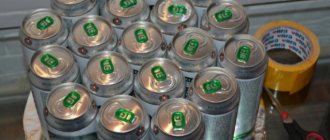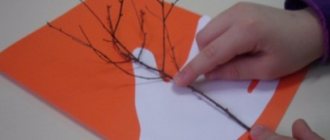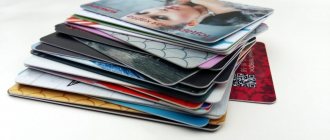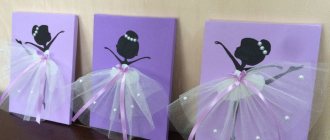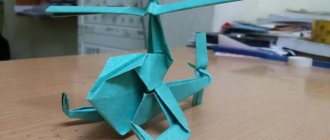Who among us has not dreamed of holding an old book or map in our hands, or receiving a letter from the past? It would seem that this is quite problematic, because antique books are expensive, and letters are not kept for so long.
But what if you try to make a book or piece of paper, a letter, a map or a postcard visually older yourself? It's so simple!
Let's talk to you about how to age paper with and without text, and in what cases you may need this skill.
Decor using paper
First of all, let's consider this question: why do we need aged paper at all and what can and should it be used for?
First of all, it is needed for the design of various crafts: postcards, photo albums, invitation leaflets. It can also be used to create original albums, writing sheets, thus showing your originality.
Agree, an “antique” book, a vintage postcard or just a sheet of parchment with a drawing or map will delight any person, no matter how old he is and no matter what his hobby is. Let's talk about how to make aged paper at home without resorting to outside help and without spending a lot of money on it.
Preparation of waste paper
To start making paper yourself, you must first prepare the raw materials for its production. Old, tattered newspapers, paper napkins, or any waste paper with a high cellulose content work best here.
The waste paper needs to be prepared - tear it into very small pieces. The size of each part is preferably no more than 1-2 cm, so that these pieces are easier to soak.
Soak the resulting pieces of waste paper in warm, clean water. It is best to soak overnight and for at least 1 hour. Paper napkins made from the thinnest paper can be soaked for half an hour.
While the raw materials are soaking, you can make a frame to squeeze out excess moisture.
Treating paper with tea
First, let's talk about how to change a sheet of paper using various liquids. Let's start with one of the most famous methods, that is, we will discuss how to age paper with tea. This is the simplest and most accessible method for everyone.
In order to age paper using tea, you will need strong brewed tea at the rate of 5-10 teaspoons of tea leaves per glass of water (if tea is in bags, then three bags of tea leaves will be enough). The tea should be brewed for 10 minutes, then it must be strained.
Having poured the finished tea into a small bath, soak the sheet of paper you need in it (you can crumple it first, so that the paper is better saturated with water, and also in order to give it an older and shabby look), let it sit for a couple of minutes. Then we take it out of the water and wait for the sheet to dry. Finally, iron it with an iron, leveling the surface of the sheet.
Tea method
This method of converting paper is considered the simplest, since nothing special is required except tea. To prepare we will need:
- 7 teaspoons of tea leaves.
- 1 glass of hot water.
Brew tea in a glass of boiling water, and then pour it into a large container; a plastic basin is also suitable for this.
Dip the tea into the paper prepared for aging and keep it there for 5 minutes to completely soak it. Then you need to remove the paper and fold it several times, carefully squeeze out the excess tea with your palms.
Next, we unfold the sheet and hang it out in the open air (on the balcony) to dry.
When the paper is almost completely dry, remove it and wrap it in sheet foil. Iron the sheets until completely dry.
Let's resort to coffee
Now let's talk about how to age coffee paper. This method of aging is not much different from the previous one. The difference is in the brew itself. For a glass of water you need 5 teaspoons of natural ground coffee. Brewed coffee should be steeped for 10 minutes, then strained. At the same time, sediment should not get into your bath in which you age the paper. Otherwise, streaks and marks may remain on the paper. In some cases, the sediment can be used to create scuff marks and brighter small spots on a piece of paper.
The time for which a sheet of paper should be immersed in the solution is no more than five minutes, otherwise the sheet will get wet and tear when trying to remove it. In addition, we do not recommend that you put several sheets of paper together in the tray, otherwise they will bunch up into one soggy piece of paper and tear.
The sheet of paper should also be dried on a flat surface, and after drying it is ironed using an iron.
If you don’t have natural coffee at home, you can replace it with instant coffee.
What can you write on aged paper?
What is your purpose for using toned sheets of paper? If you make a notebook, then of course you can write down your innermost thoughts. The checkbook of desires will be able to place what you want to receive from your loved one. Or, after aging individual strips, write some quotes on them and use them as decoration.
It’s a great idea to print a romantic verse on paper for your significant other on some significant date and roll the message into a scroll. For example, on February 14th, Valentine's Day, this would be a great idea. And you can find the poems in the article:
The text written in calligraphic ink looks very beautiful. This, of course, can be typed in Photoshop, but if you or one of your friends has unsurpassed talent, prepare a base in the form of vintage paper and ask them to write beautiful text.
I already mentioned the work of Harry Potter above. There are a lot of interesting things that can be brought to life thanks to the paper aging skills that we discussed in this article.
In general, everything you have learned now is the basics. It's like wings that you now have, and you can only control them yourself. And creativity knows no boundaries, times and ages. Therefore, create with your own hands, write messages, letters and surprise your family and friends with your crafts and gifts.
Using milk
Now let's talk about how to age paper using milk. To do this, you will need milk with a high percentage of fat content. It’s better if it’s completely homemade. You should also find a brush to apply it with.
We crumple the sheet of paper, then use a brush to thoroughly paint it with milk on both sides. After it is well soaked on both sides, lay it out on a flat surface. Leave it for a while to dry. Then iron the sheet using an iron. In this case, the temperature should be high enough, and dark brown spots should appear on the paper itself.
In addition, you can also dry a sheet of paper in a microwave oven or using a hair dryer. The main thing in this aging method is the effect of high temperature on the solution itself, with which the sheet of paper is impregnated.
LiveInternetLiveInternet
Good day, my dear needlewomen! I want to share with you how handmade paper is made. The post will be of interest to many creative individuals who are expanding their horizons: those who are passionate about scrapbooking - for creating postcards, covers for diaries, photo albums, envelopes, business cards; for dollmakers: labels, price tags; beading: imagine what a sensation you will make if you use hand-made paper as a backing for your jewelry! You can make lampshades for lamps, there are even designer wallpapers made by hand. And today it is fashionable to decorate various office papers, forms, envelopes made of hand-molded paper.
In this way, you will show your originality and unique style, you can make a beautiful original gift that your friends will remember for a long time. Things made with your own hands are valued, first of all, for their uniqueness and the soul put into them. Such paper can only be bought in specialized stores for designers and artists, and it is expensive. But who is stopping you, knowing the technological process, from doing such a thing yourself? A short introduction
The most versatile material for writing, printing, and even various design works is plain paper. Paper was invented in China about two thousand years ago. Naturally, at first it was made by hand. To do this, plant fibers were crushed, soaked in water, filtered, pressed, and then dried and used for various purposes. It was only after the advent of specialized devices that paper production became mechanized. But until now, the most expensive exclusive sheets are made by hand.
Before you start making handmade paper, you need to imagine what shape and size of paper sheet you need, what decor you want to add, and for what purpose your work will be used. The texture of the paper can be smooth and structured; the manufacturing technology can be simple or decorated with flower petals, seeds, scraps of fabric, foil, feathers, and leaves.
In order to get homemade paper, we will need unnecessary paper (written sheets, old newspapers), napkins, toilet paper, PVA glue, starch. Also, don’t forget to prepare a deep tray with a net, a terry towel, a kitchen towel, and various decor (dried flower petals, shells, seeds, feathers). You also need your unquenchable imagination.
There are many different ways to make homemade paper. They differ in the method of production and drying, and the type of decor used.
The most important steps for making paper:
— Finely tear or cut the paper sheets, put them in a bowl and fill with warm water. Mix all this well, let it stand for some time (from several hours to a day, depending on the thickness of the paper) or put it on the fire and boil for 10 minutes.
- Add starch (flax decoction, gelatin, plum gum, i.e. something binding) so that the paper fibers are bonded together and the sheet becomes strong and flexible. Instead of starch, you can use potato decoction. Various adhesives are also added. They reduce the moisture-absorbing properties of the paper so that ink or paint does not bleed when printing, writing, or drawing. The first adhesives contained gelatin, and drying paper was pressed into them. In the 18th century, internal sizing joints began to be used, which speeded up the production process many times over. For this purpose, alum resins began to be used. Unfortunately, the glue they contain, being more economical and ergonomic than gelatin, increases the acidity of the paper. It was noticed that many books from the beginning of the 19th century became old and worn out very quickly: a violation of the acid-base composition caused increased fragility and brittleness of the paper. Modern “papermakers” use more gentle adhesives and combine them with other substances that neutralize the acidity of alum resins.
- After this, you can mix everything with a mixer, or knead it with your hands to get a homogeneous mass. Squeeze the lump out of the water.
— If the paper used was gray or written on, it can be bleached by using a hair bleach product.
- Now the resulting lump of paper fibers must be diluted again in a small amount of water, you can add a little more PVA glue or starch so that the paper is elastic, bends and folds)
-1. The most important and important thing in paper production: the frame
wooden frame, a polymer mesh (white) is stretched on top, wire under the mesh so that the mesh does not sag,
a piece of black mesh (bought at a fabric store)
wooden frame (upper and lower frames are connected,
— We take a basin, a plastic tray, or a deep tray, a frame with a metal mesh, or a plastic mesh and pour the resulting mass onto it. Make sure that the layer is even.
— After all that has been done, you need to think about decorating your paper. To do this, you can sprinkle seeds on top, use flower petals, crushed shells, feathers, and pieces of foil. The main thing here is your imagination. To make the paper embossed, you can crumple the foil and press it to the surface of your masterpiece, but only after you have squeezed it out of the water.
- Now prepare a stack of newspaper sheets, put a terry towel on top, the paper mass we prepared on it, another towel on top, and fix it all with a press. It takes several days to dry, changing wet towels for dry ones. This operation can be done faster if you remove excess water from the mass and cover it with a thin towel (for example, a kitchen towel), iron your entire creation, and then dry it with a hairdryer. You can also use an electric oven for these purposes, but in this case the paper may warp. Therefore, top your creation with peas or beans.
— If you want to make colored paper, you can use multi-colored scraps, or simply add a dye to the mixture, such as gouache, watercolor, or other paint that dissolves in water.
-Used in various drying methods, depending on the desired texture. Calendered paper with increased smoothness, dried on a special smooth plate, is very good for embossing and gold stamping. But you can also make smooth paper with small dents - this will be an exact imitation of limestone. If you dry the paper on a fabric backing, it becomes looser and softer, and embosses well. There is also original corrugated paper, subjected to repeated drying and special deformation - it is very good for packaging.
-Paper dried on a mesh has a noticeable mesh texture, and although the front side is considered smooth, many people like the back side, where this texture is noticeable. This paper, due to its composition, is very loved by artists, as it has a neutral pH. You can get a beautiful original gift that your friends will remember for a long time. Things made with your own hands are valued, first of all, for their uniqueness and the soul put into them.
Master class on making handmade paper
I liked the MK from Tatyana Zakharova, because it presents the material in an accessible and understandable manner and, most importantly, is close to the classical manufacturing process.
So, for work you will need:
Blender
Water container: basin, pan or tray. I bought myself a litter box from a pet store, usually used as a cat litter box. 
Frame and mesh (details below) - should be about 10 cm smaller than the water container on each side: you should be able to easily immerse them in a container of water by holding the sides with your hands.
Several foam sponges for washing dishes
Several pieces of fabric that absorbs water very well. I used sheets of felt, and then found in the kitchen household napkins, which are usually used for wiping surfaces (sold in hardware departments under the brands “Cinderella” and “Chistulya”). They were perfect for making paper!
Paper: cardboard boxes from once gifted perfumes, cardboard packaging for eggs, printer paper, napkins, wrapping paper.. Almost any will do! It is not recommended to use glossy magazines and newspapers, as there is too much printing ink.
All possible inclusions: leaves, grass, threads, wool, glitter, confetti - to decorate the paper and give it a unique flavor.
Pour some water into the blender and put the paper in it, after tearing it into small pieces. I added a few pieces of white cardstock and a few pieces of orange construction paper to add some color. Paper can be colored in several ways: by mixing white sheets with colored ones, and also by infusing it in onion peels, tea and other natural dyes.
Now cover your ears and turn on the blender. We need to bring the source material to a pulp state: as a rule, this takes about a minute. Here you can go two ways: shred the paper until smooth, or stop halfway, as I did. Look at the mixture in the blender and the photo of the finished paper: you can see bright orange inclusions there. This is under-shredded orange paper.
We need to bring the source material to a pulp state: as a rule, this takes about a minute. Here you can go two ways: shred the paper until smooth, or stop halfway, as I did. Look at the mixture in the blender and the photo of the finished paper: you can see bright orange inclusions there. This is under-shredded orange paper.
Pour the resulting mass into a container with warm water. At the same stage, add inclusions to the bowl: confetti, threads... whatever you see fit!
Now it’s the turn of the main tools, without which the process of making paper is practically impossible: a grid and a frame. Click on the image to take a closer look at these tools. Two frames, one of which has a fine mesh stretched over it. The mesh is needed to retain paper particles and allow water to pass through. A frame without a grid is needed to give the sheets of paper a rectangular shape. They need to be used as shown in the photo: the frame with the mesh is located at the bottom, the mesh up. A frame without a mesh is placed on top.
Align the sides of the two frames, grab them with both hands (the mesh is facing you, the frame is on top), and immerse them in the basin as shown in the photo below. First vertically:
Then carefully move the frame and mesh to a horizontal position, lowering it under water. In the photo, I'm holding the frame and grid with one hand only because I'm taking the photo with the other. I usually hold them with both hands 
Remove the frame and mesh from the basin strictly vertically. There will be a damp paper pulp on top of the mesh. Let the water drain (about a minute), then take a sponge and start blotting from the underside: where the wet paper pulp is separated from the sponge by a mesh. Wring out the sponge (or change it) 2-3 times.
Blog reader advice: after the first stage of spinning, try to make a special hard mesh box (preferably plastic) the size of the mold canvas, and place the box in a plastic bag, then put the end of the bag on the vacuum cleaner tube and wrap the end of the bag on the tube with electrical tape or tape - this will help you get rid of excess water using a vacuum method.
Now carefully remove the frame from the mesh. We have a rectangle of wet paper pulp on the grid. Set it aside and prepare an area where your paper will dry.
I did this on the windowsill - it’s good that its width allows. So, place a plastic bag on a flat surface that is not afraid of moisture, and several sheets of newspaper on top of it. Wet and lightly wring out a piece of absorbent fabric and place it on top of the newspapers. It is very important that the fabric is damp and has a non-woven structure. Now take the mesh on which the wet paper rests and place its wide edge against the damp non-woven material (laundry napkin) so that the mesh is on the bottom and the paper is on top. In one quick and gentle motion, flip the net over as shown in the photos below:
Now the paper pulp lies on a damp cloth, with a mesh covering it on top. Take a sponge and begin to blot the mesh, removing excess moisture from the paper pulp:
Squeeze (or change) the sponge thoroughly several times. At this stage we must remove as much moisture as possible from the mesh side. When there is little water left on the sponge after blotting, slightly lift the narrow edge of the mesh and look under it: if the paper does not stick to the fabric and rises with the mesh, continue to remove excess water with the sponge. If the paper separates from the mesh and remains stuck to the fabric, great, that's what we need. Carefully remove the mesh, leaving the paper on the fabric. At this stage, not everything can go smoothly - practice and experience are needed here. A couple of times my sheet of paper tore until I realized that it is very important that the “receiving” fabric is wet: then the paper pulp will stick to it more easily and come off the mesh.
If you want to make one sheet of paper, you can leave it to dry directly on the mesh or fabric. If you want to make several sheets in one session, cover the still wet sheet of paper with the next layer of damp non-woven material, and repeat the procedure from the very beginning. Place the next sheet on top of the previous one, lay wet household wipes between them. This design looks something like this:
When you run out of felt sheets and household napkins (or when you run out of strength and desire to continue), place the last piece of felt material on top of the resulting multi-layer structure (this time you can take a dry one), you can put a towel on top, then some newspapers, a plastic bag , and weigh it down with a piece of wood or a thick art book - if anything happens, the bag will save it! Place the heaviest dumbbells on top, and leave your sheets for a day or three under this press. Once a day, it is advisable to disassemble the structure and ventilate it so that nothing becomes rotten or moldy in the moisture. On summer days, the paper will dry faster than on rainy autumn days. Proximity to heating appliances is also important: my drying structure lay on the windowsill directly above the central heating radiator, which accelerated its drying. When the paper dries, dry it a little in the open air, and again put it under the press for several days.
Place the heaviest dumbbells on top, and leave your sheets for a day or three under this press. Once a day, it is advisable to disassemble the structure and ventilate it so that nothing becomes rotten or moldy in the moisture. On summer days, the paper will dry faster than on rainy autumn days. Proximity to heating appliances is also important: my drying structure lay on the windowsill directly above the central heating radiator, which accelerated its drying. When the paper dries, dry it a little in the open air, and again put it under the press for several days.
As an option: if the mesh and frame used above seemed to you to be too complex or difficult to access, you can use improvised materials that every housewife has: an embroidery hoop and a mosquito net, or in general, just a mosquito net.
In this case, the sheets are round and more textured, due to the large size of the mosquito net cells. If you use only the mesh, the paper pulp will float away, and the sheets will turn out shapeless and thinner at the edges. I used this design before I got the grid and frame, and, most likely, I will never use it again - compared to a rectangular grid and frame, it is very inconvenient!
Good luck! :)Author: Tatyana Zakharova
source
Master class 2:
Take regular table napkins in different colors. Tear them into small pieces.
Fill the napkins with water. Beat with a whisk or mixer into a homogeneous mass. Add PVA glue.
Place a piece of mosquito net on the tray.
Pour the slurry onto a tray. The water should cover the paper pulp.
Add filler. For example: threads, petals, pieces of napkins.
Cover everything with a second mosquito net.
Use a sponge to collect water from the surface from the center to the edges.
The surface should be as dry as possible.
Using a board and a towel, we transfer the paper.
Remove the mosquito net.
We place the paper between the towels.
Can be dried with an iron. But it is imperative to put the “paper sandwich” under the press and dry the paper for about 4 days.
source
Master class 3:
In the evening there was a master class on hand-making paper. Handmade paper is highly valued by artists, and it is in great demand for exclusive printed products.
And, if desired, you can make it at home.
Some kind of fibrous bark is used as a raw material (I was a little late to the beginning, so I missed the name), it is steamed until soft, collected into a lump and carefully beaten with a hammer, then kneaded and beaten again, and so on many times, the task is completely separate the fibers from each other:
This important task was entrusted to the children present, who did it in shifts.
The resulting mass dissolves in water, and flaxseed, previously steamed in boiling water, is filtered through a sieve. Flax seed in water releases mucus abundantly (has an enveloping effect, as doctors say). This mucus is needed - it plays the role of a binder.
Then everything is mixed and this mass is scooped out with a sieve with a removable grid:
...then the sides are removed from the sieve, and the layer of paper pulp is covered with a cloth...
...excess water is squeezed out...
... leans back...
... the sieve and mesh are removed, and the paper pulp remains on the cloth:
This is repeated many times until a stack of traps covered with paper pulp is formed. The foot can consist of hundreds of layers, but in our case - only three. Now you need to squeeze out the excess water; to do this, the foot is pressed.
The pressed paper pulp is transferred from the fabric to the surface on which drying will take place.
The traditional (Japanese) process involves wooden surfaces for drying, and the drying itself is done in the sun. Our lecturer uses a metal sheet from a photo glosser
The glosser turns on - and after 15 minutes the paper is ready.
Meanwhile, the next portion is on the way. As you can see, the children are so responsible for beating that they even split the board in half)
No wonder: each of them will receive a sheet of self-made paper!
source
French method of making decorative paper for cards.
papierpaille.jpg (150×195, 8Kb)
I specially translated it into Russian for you, and see the photo on the website here: https://www.creaclic.ch/pagestechniques/papartisanal.php
Required:
any paper (including toilet paper), except old magazines, varnish covers and colored pages. Two frames with stretched fabric (against mosquitoes or nylon for tights) like a sieve, the size is at your discretion. A mixer (or blender), a container that is wider than the size of the frames, a wooden press that fits the size of the frames, old magazines, old bath napkins, a spatula for stirring paints (I forgot what this is called in Russian) and kitchen napkins.
Preparation of the mass.
Tear the paper into small square pieces and leave it to soak overnight. The next day, put everything in a mixer in the proportion of 35 pieces of paper per 1 liter (it is not clear what the pieces should be :)) Pour it all into the prepared container until it is half full. Add colored wool fibers or dried lavender or straw flowers or glitter, etc. to the mixture.
Technique.
Now take two frames and, having mixed the mass well with cellulose fibers in your container, insert two frames into this mass with movements towards you, holding the frames horizontally. Raise them slowly and slightly tilt them in different directions to allow the water to drain. Carefully remove the top frame.
Laying out a wet sheet of paper.
Lay a bath napkin folded to the size of the paper (or, more simply, an old terry towel), carefully smooth out the folds, lay a slightly damp kitchen napkin on top and place your first sheet on it, pressing on the grid so that the sheet moves away from it and lies evenly and tightly on the napkin .
Place another damp kitchen napkin on top, place your second sheet of paper on it, then do the same with the third and fourth, as much as you can get from your prepared mass.
Pressing.
On top of the old magazines, place this stack of fresh sheets of tissue paper, and place other old magazines on top. Now place this foot on a wooden press (just a flat board according to your paper size) and place another wooden press on top. Squeeze them and let the water drain out of your sandwich.
Drying.
Now you need to change the damp old magazines (leaving the napkins with your sheets) and put them back on the press. On top of the press is a load (books, cans). Leave it like that for two hours. Then change again to dry magazines and again under the press. Then you can change after six hours. And then daily. Drying may take several days, but do not use hair dryers or artificial heaters, they will distort the sheets and ruin the whole job.
When the napkins, and therefore your paper, are dry, carefully remove the napkin while holding your sheet of paper; the same spatula that artists use when stirring paints will help you with this.
source
Here you can find out how paper is made from natural raw materials.
Receiving fiber from mymailto
Seryozha.
Example 1: Obtaining fiber from the bark of young mulberry branches The bark is soaked overnight. The outer layer is separated from the inner layer with a knife. The outer layer is discarded. In principle, you can leave it - some fibers remain on it, and this can also be processed into paper. But I'm throwing it away. The inner layer is cut into pieces 1-1.5 cm with a knife (although this is fundamentally wrong, but I do it that way). The bark is boiled in an alkali solution - WORK WITH LYKE VERY CAREFULLY! The source of the alkali is liquid for flushing drains/kitchen pipes (the composition on the label is sodium hydroxide or caustic soda or NaOH). The amount of alkali is 3-4 caps per “fist” of soaked bark. Cooking takes 1.5-2 hours. The solution becomes dark brown. The bark is washed with cold running water. About five minutes, then I put it in a jar, fill it with water, after 5-6 hours I drain the water, squeeze out the bark, put it back in the jar with water+ So for a couple of days. Intervals can be increased to 8-10 hours. As a result, the bark in water has a light light green tint (or white, as it was boiled and washed), has a golden shine, is soft, and the lump is easily torn by hand. The bark is beaten with a hammer. I use a meat mallet or a mallet (wooden mallet). I take a portion and beat it off. I roll it up, turn it over, fold it - the goal is that all the fibers in the bundle should “disperse.” This continues until there are visually no cut pieces in the bark mass. The bark is washed under the “shower”. This will further help disperse the fibers in the water.
master class “Handmade paper” from Marat`Ka
Lemon juice
Let's say a few words about how to age paper using lemon juice. This is another quite interesting method and probably known to many. So, aging paper using lemon juice. If you were into detective stories as a child, then you probably know that many criminals and even detectives wrote their secret notes using lemon juice. In this case, the inscription appeared only under the influence of high temperatures.
To age paper using lemon juice, you will need the sheet of paper itself, lemon juice, and a hair dryer. A hair dryer can replace a microwave or a hot iron.
Squeeze the juice from the lemon. Then we apply it to a sheet of paper using a sponge, brush, or simply dipping it in a container with lemon juice. Then you should place the sheet on a flat surface and dry it with a hair dryer. As it dries and is exposed to heat, it will begin to darken.
Now you also know how to artificially age paper using lemon juice.
Alternatively, this method can be used for additional leaf decoration. So, you can make inscriptions on a sheet of paper using lemon juice, and then develop them. This is a rather original way to decorate cards and albums.
How to artificially age a sheet of paper with milk
As a child it seemed like something magical. So we learned that there is invisible ink that can only appear when necessary. Even a secret message could be transmitted. But before, this was used quite often by revolutionaries during the time of Lenin. So what was it? Plain cow's milk. And it is in this section that I will show you how you can artificially age paper using this dairy product.
The milk must be very fatty.
After all, the protein contained in it coagulates and darkens when heated. This results in a Polaroid-like appearance.
We draw whatever our heart desires or write. You can do this using a cotton swab or simply coat the surface with a soft sponge.
In order to develop small areas, you can use an open flame of a candle or lighter. Under no circumstances should this event be held in a room. If this method is used by a child, it is imperative that adults be nearby. I recommend carrying out the procedure in the bathroom, with the water turned on, to protect yourself in case the paper catches fire. And this method is convenient for small pieces of paper.
If the surface of the sheet is large enough, opt for an iron. Place the sheet on a thick towel, iron the surface and voila, the inscription will appear. The same effect is achieved using lemon.
And this is how you can decorate paper by writing it with milk. The only downside is that you simply won’t see your art in the first place. Therefore, you will need to make pencil sketches.
Aging paper using potassium permanganate
If you have potassium permanganate (that is, just potassium permanganate) at home, then it will be quite easy for you to age any paper. To do this, you need to pour several granules of potassium permanganate into the container in which you are going to paint the sheet, then dilute it in cold water until completely dissolved. In this case, the solution should be a rich dark pink color. When working with the solution, be sure to wear gloves so as not to stain or burn your hands.
After this, dip the paper in water for five minutes. When it is sufficiently saturated with water, take it out of the container and lay it out to dry.
After drying, the paper acquires a pleasant brown tint. Now you also know how to age paper using potassium permanganate. As you can see, this is a rather interesting and simple method. In addition, with the help of potassium permanganate you can artificially age fabric items.
Raw materials for paper production
You can make paper with your own hands from a wide variety of raw materials. Many people have at home a large number of old newspapers, unnecessary books or textbooks, written notebooks, and useless cardboard boxes. People often throw away all these things, although they can be taken to a waste paper collection point or, even more interesting, reused. Suitable for DIY paper recycling:
- paper for printer;
- old newspapers;
- magazines (except glossy ones);
- paper towels and napkins;
- cardboard (not waxed) or colored paper;
- paper bags;
- carton boxes;
- toilet paper (clean);
- cardboard egg trays;
- notebooks, unnecessary books, notepads.
Spruce or pine sawdust, reed, and straw are also suitable for making paper with your own hands. The following items may be needed from the tools:
- large saucepan;
- blender or food processor;
- wooden frame;
- fine gauze or mosquito net that needs to be secured to the frame;
- cloth or sponge;
- newspapers;
- viscose fabric;
- iron.
Aging paper using a candle
Now let's move on to thermal methods of aging paper. First of all, let's talk about how to change the age of paper using fire.
The simplest and most likely known to many method is to use fire to age the paper and give it the appearance of something that has survived a fire.
For this you need a candle. In this case, you will have to age the paper over a sink, so that in case of fire, you can quickly extinguish it and prevent a fire.
We place the candle in the candlestick and then place it in the sink. After this, light the candle. We take the sheet of paper you need in our hands and begin to carefully move it over the candles. In this case, there should be a distance of at least 10 cm between the paper and the fire. The paper should not be held in one place. So you can set it on fire.
Making a mesh for squeezing
To do this, you need to take an old household metal pan or plastic cup and cut a hole in the bottom. The hole needs to be made so that there is an edge around the inner perimeter of about 2 cm. We will later attach the mesh to this edge.
Place a metal or plastic mesh with a fine mesh on the bottom of a pan or cup. To prevent the mesh from falling into the hole, you need to cut it to the size of the bottom of the pan.
Soak the waste paper in warm water.
Microwave oven as a means for aging paper
As you know, paper darkens when exposed to heat. Heat can be emitted either by fire or by a device powered by electricity - a hairdryer, stove, even an electric fireplace. But let’s talk about something that is probably in every home - a microwave.
One of the easiest ways to age paper is to temporarily place it in a microwave oven at a temperature of 200 degrees Celsius. In this case, the paper itself should be pre-moistened in water or a solution of tea (coffee).
Alternatively, you can place the paper in the refrigerator first and then in the microwave. This way you can also age the paper for several years. Now you know how to age paper in the microwave.
How to make paper at home?
To do this we will need the following things and tools:
– old newspapers, napkins or other waste paper;
– a sieve for sifting flour;
– if there is no flour sieve, then you will need a mesh and an unnecessary saucepan or cup;
– warm water;
- dry towel;
- rolling pin for dumplings.
All these components are found in almost every home, so we can safely start making paper at home.
Aging with the sun
Well, those who want to add age to paper in the most natural and simple way possible, without resorting to fire or electrical appliances, or various tinctures, should use the help of the sun.
On hot summer days, you can use the simplest method for aging paper - solar. To do this, you need to put a sheet of paper or even hang it so that sunlight falls on it all the time. In a few days it will be ready. But you should age the paper in advance in this way.
Aging by the sun's rays
If there is no tea, milk, or coffee in your house, then we recommend the easiest way to make a sheet of antique paper using the sun. However, based on the conditions of our climate, it is sometimes much easier to get black tea or a cup of milk than the shining sun. But if you decide to do aging in the spring or summer, then everything is in your hands.
So, as you already understand, the essence of the method is extremely simple. All you need is to crumple up a piece of paper. It is best to use a thin sheet here. And hang it by the tip in a sunny place. Keep in mind that the sun moves during the day, which means the leaf should move after it. Direct sunlight will make the leaf yellower, and this effect can easily be mistaken for the effect of aged paper.
conclusions
There are many ways to age a sheet of paper. We have discussed only the most famous and used of them. All of these methods work equally, although the appearance of the paper may differ.
If you are in doubt which method to choose, experiment with each of them and compare the results. Remember that the appearance of aged paper largely depends on how strong the solution you treated it with, as well as how strong and long the thermal exposure process was.
